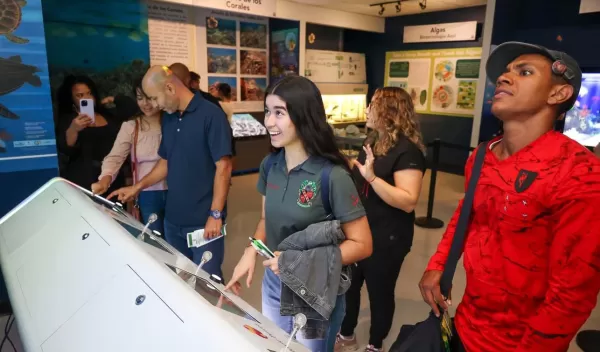
5 areas where NSF funding is enhancing undergraduate STEM participation at Hispanic-serving institutions
In the U.S., just over 21% of the undergraduate student body identified as Hispanic in 2021. Nearly 63% of those students were enrolled at Hispanic-serving institutions (HSIs).* Despite representing only a small portion of the nation's public and private institutions of higher education, HSIs produce key STEM research. These institutions have made great strides in advancing STEM education for the diverse populations of students they serve, including expanding undergraduate research opportunities, improving technical training at two-year institutions, and introducing active learning to calculus courses to improve student success. And to continue these efforts, HSIs require support.
According to the U.S. Government Accountability Office, HSIs have extensive infrastructure and equipment needs due to outdated buildings, natural disasters and lack of funding. To address some of these needs, NSF has awarded more than $3 million to provide new STEM equipment to broaden STEM participation and education across five different areas through two solicitations from the NSF HSI program, Enriching Learning, Programs, and Student Experiences and Equitable Transformation in STEM Education.**
The goal of these solicitations is to meet the National Science Board's vision for a more diverse and capable science and engineering workforce by enhancing the quality of undergraduate science, technology, engineering and mathematics education at HSIs. These solicitations focus on transforming STEM education at HSIs through improving the student experience and the institutional infrastructure.
Here are five areas where NSF funding is changing the educational landscape for Hispanic students by providing new, state-of-the-art equipment to eight different HSIs.
- Virtual reality technology
The Pontifical Catholic University of Puerto Rico received funding to install an advanced physics laboratory equipped with high-performance computers and 3D immersive VR technology, enabling the simulation of physics principles that are difficult to replicate in a traditional lab and allowing students to visualize abstract concepts, increasing student retention and engagement. Virtual anatomy
NSF funded the installation of Anatomage tables at three different HSIs, Cossatot Community College, Colorado State University Pueblo and Hartnell Community College District, as well as additional critical equipment, instruments and computing resources in chemistry, biology, earth science and mathematics. Anatomage clinical tables provide high-definition 3D models of systems and structures across the human body, allowing students to conduct virtual dissection. The technology also allows for the upload and study of medical images (e.g., X-ray, CT and MRI scans). Enhancing anatomy and physiology education at these community colleges will contribute to more STEM bachelor's degrees and a more diverse STEM workforce.
Weather studies
California State University Desert Studies Center installed a research-grade weather station. The weather station will allow students to collect and analyze real-time environmental data, support data science instruction and climate science investigation, and prepare students to work with networked data systems. The weather station will be connected to the NSF-funded Dendra network of over 200 monitoring sites throughout the Mojave Desert and across the southwestern U.S., augmenting efforts to understand the consequences of climate change in one of the hottest places on the planet.
Manufacturing
Funding from NSF helped expand the industrial and manufacturing engineering capabilities at two HSIs, the California State Polytechnic University, Pomona (CPP) and the University of Houston-Clear Lake. CPP secured an Industry 4.0 training system, allowing students to learn from simulations of real-world assembly processes, strengthening undergraduate learning in industrial and manufacturing engineering. The University of Houston-Clear Lake funded a metal additive manufacturing machine, giving students hands-on learning and allowing them to compete in state and national-level design and manufacturing challenges. These projects will prepare a more diverse and skilled workforce equipped with the latest technological knowledge for the industrial and manufacturing sectors.
Artificial intelligence and cybersecurity
Expanding AI and cybersecurity education at HSIs and other minority-serving institutions is critical to creating a strong, diverse STEM network. NSF funding will provide New Mexico State University (NMSU) with state-of-the-art servers and robots to expand its computer science curriculum, including adding a new Bachelor of Science degree in artificial intelligence, making NMSU the second HSI to offer an undergraduate degree program in AI. Another grant at the California State Polytechnic University, Pomona will fund the installation of a Security Operations Center (SOC), which will be student-run to give students hands-on learning and combine theoretical knowledge with practical application in cybersecurity. SOC will allow students to engage in regional, national and global cybersecurity competitions, and it will aid students in seeing themselves as cybersecurity professionals.
* To qualify as an HSI, a higher education institution must be accredited, not-for-profit, and have an enrollment of full-time undergraduate students that is at least 25% Hispanic students at the end of the award year. For more information about HSI eligibility, please see the Department of Education's definition.
